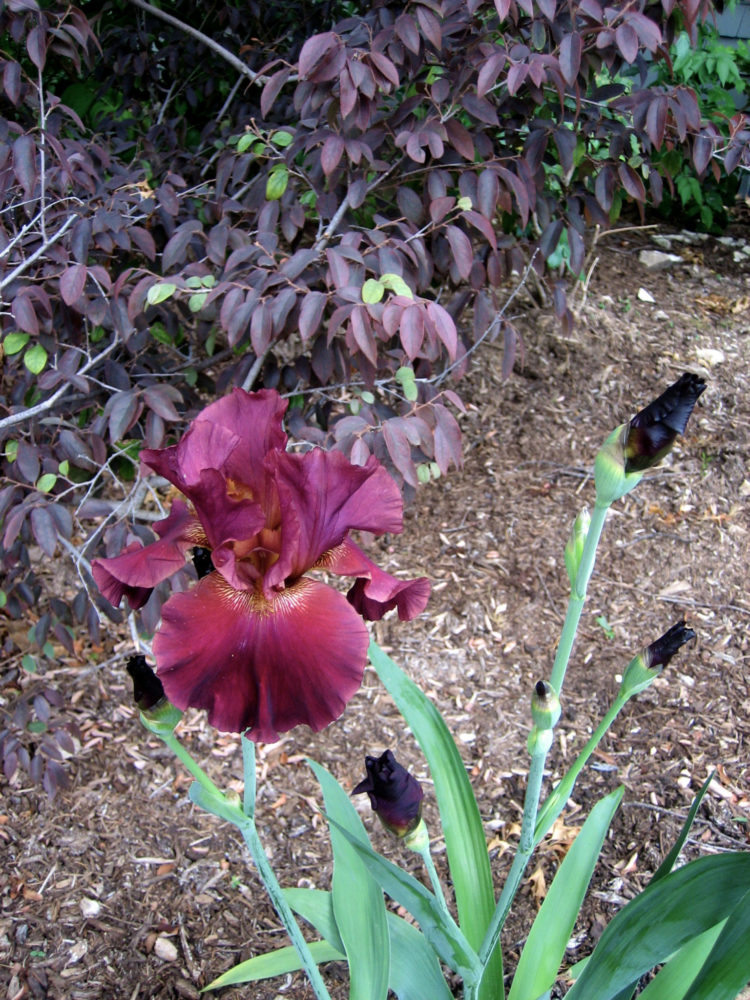Iris

Iris
(Iris germanica)
A classic old-time ‘pass-along’ plant, we love the big showy flowers of bearded iris even if the season is short. They make up for it with sturdy, evergreen sword-shaped foliage that provides a good foil to fuzzier plants in the border. Fragrant and romantic, they will multiply in full sun or very light shade and last for years. Don’t cover the rhizomes with soil or mulch; when planted too deeply they will make leaves but not bloom. Prefer drier soils. Some varieties are alleged to re-bloom in the fall; although we haven’t seen consistent results ourselves, we keep hoping!




